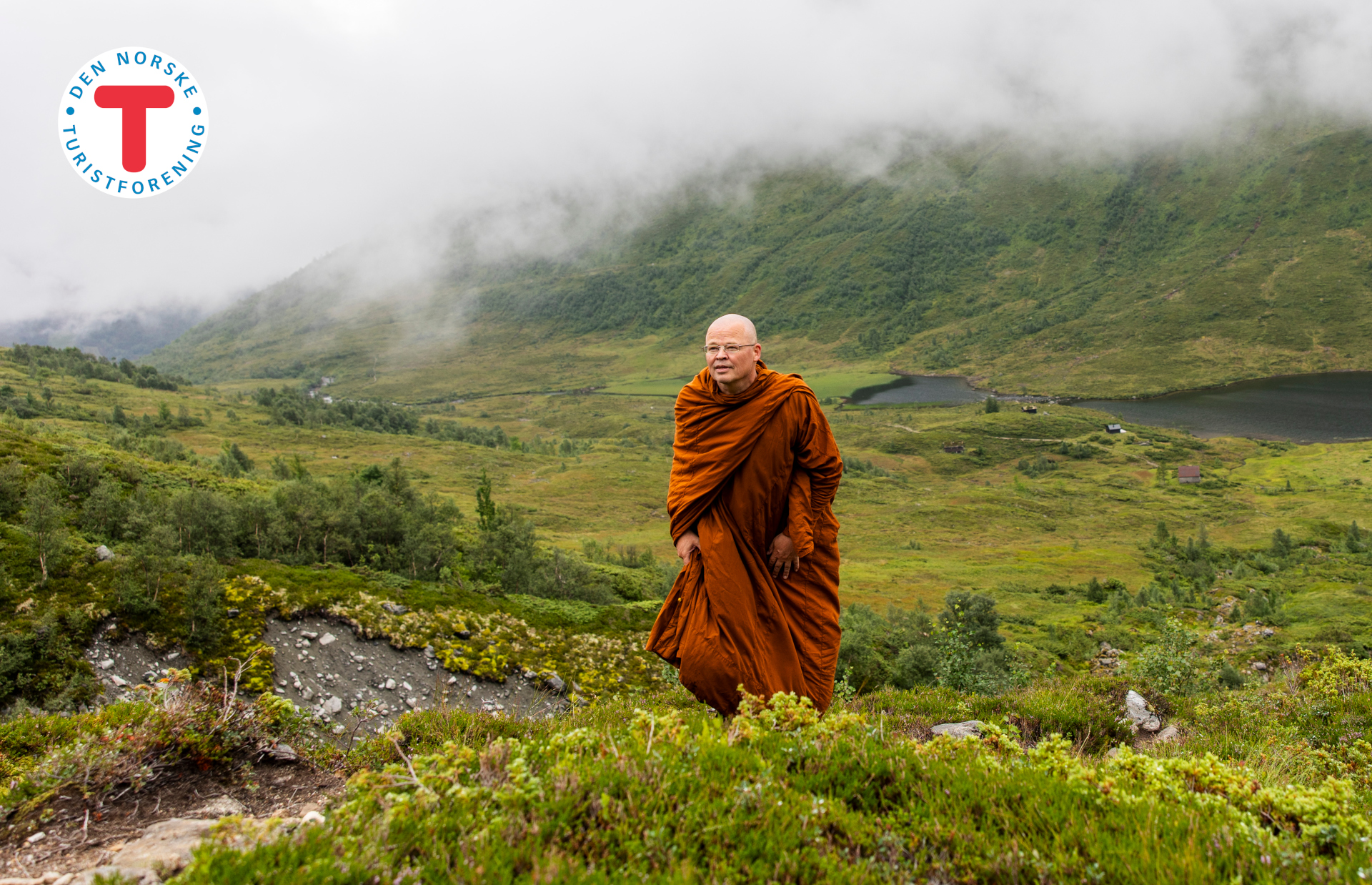Nitho was to become a successful economist, but in stead he became a Buddhist monk. He partly blames the mountains for that.
Find the whole article here:
https://dnbf.org/en/2025/10/from-beseggen-to-bhikkhu/


Read the original article at DNT
This article is written by journalist Line Hårklau in DNT – The Norwegian Trekking Association. Read the English translation below, or the original in Norwegian language here:
https://fjellogvidde.dnt.no/dypdykk/nitho/
The article is reproduced here in its entirety, in order to produce an English version of the same text. The article is printed in the magazine DNT Fjell og Vidde, and sent by mail to its 250,000 members in Norway.
For readers outside Norway, “Beseggen” is one of the most famous mountain area in Norway.
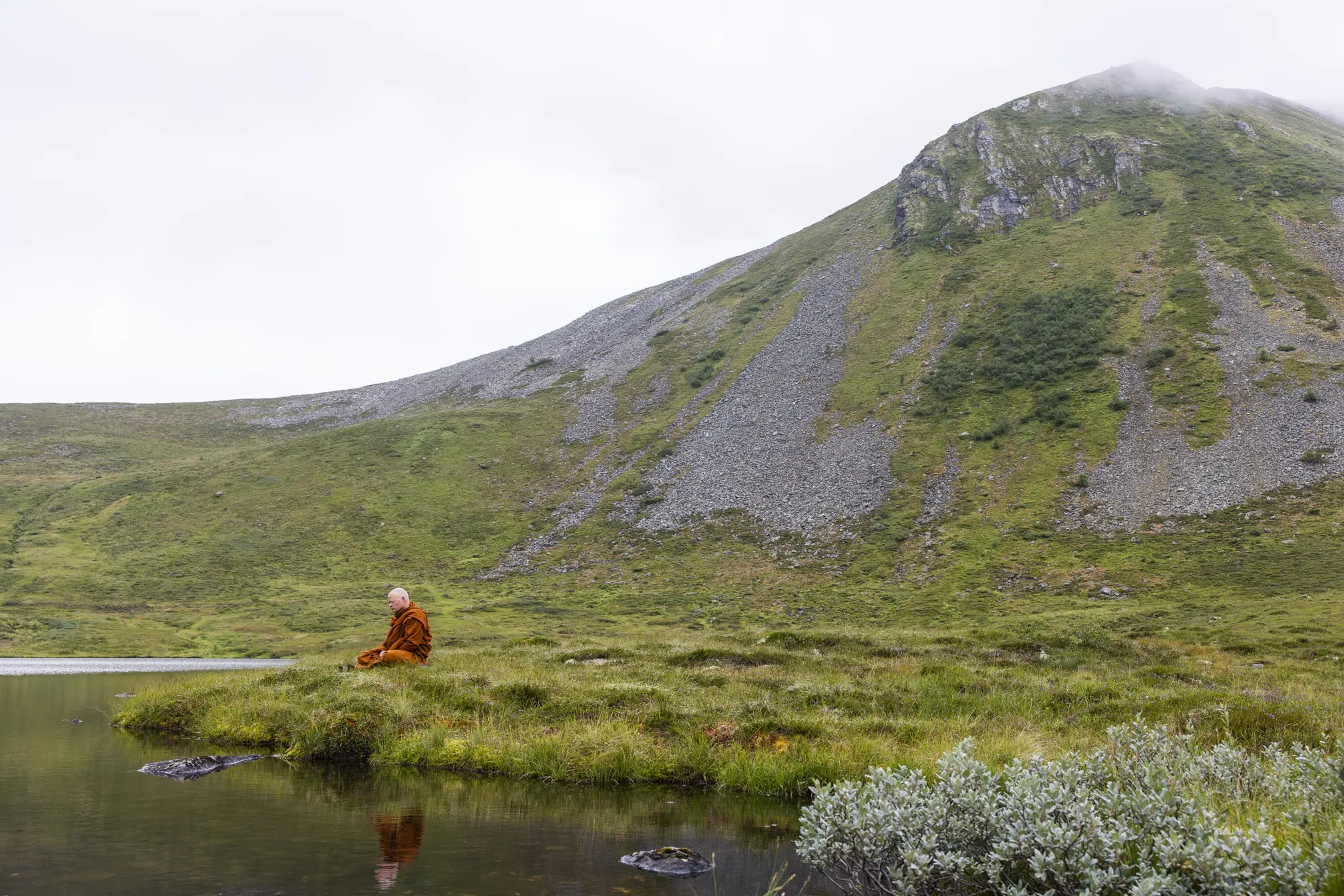
I’m going to meet a Buddhist monk in a cabin in a valley at Sunnmøre. Of course I am going to.
Just under half an hour on a path to a lake with 10-12 cabins scattered along. Traditional, small cabins with checkered curtains and dead flies on the winding sill. There are no heating cables or water toilets.
The fog presses down along the mountainsides and makes everything wet, wet, wet.
I look at the drone picture I have been sent, where a red arrow points to the cabin I am going to.
“You have to be Line. Come in!”
The man in the doorway introduces himself as Nitho. He is energetic and smiling. My gaze went instinctively for visual markers, but both the monk and the hut look surprisingly ordinary.
Maybe not so strange.
This is not a monk from Thailand or Tibet. Nitho grew up close to the local area and lived for a long time what most of us would call an ordinary life – with the name Bjørge Berg.
He studied at the Norwegian School of Economics in Bergen, became an economist and continued on towards a family life, with a comfortable annual salary and a respectable car. Then something happened that he believes DNT is partly to blame for.
We will come back to that.
Today, Nitho can look back on 18 years as an ordained Buddhist monk, also called bhikkhu.
After spending the majority of his monastic life in Australia, he moved back to Norway during the pandemic and helped start the Buddhist Society of Norway.
Nitho does not have a permanent home. In some periodes he lives in a temple in Oslo. Much of the time he is traveling to teach. But now the monk has a break in the mountains, alone in peace and quiet. Here he has the optimal opportunity to focus on his own development.
Only when the snow will reach the hut does he move on.
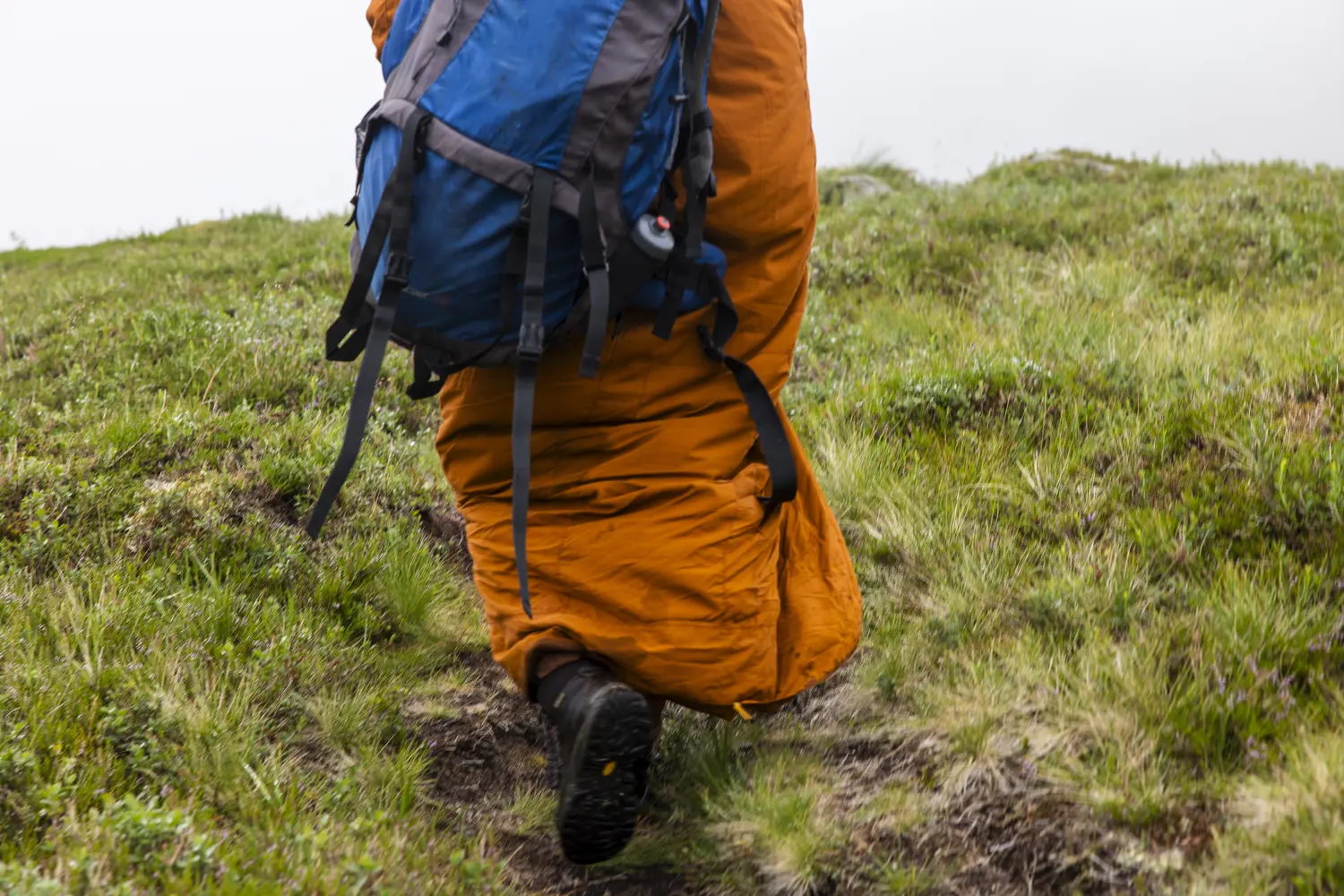
I got a kind of emotional understanding that here is something. There is something about being out in the mountains and nature, but at that time I couldn’t explain what it was. —Nitho, Buddhist monk
At school and elsewhere in society, Buddhism is referred to as a religion. Nitho does not share this opinion. He is searching for a better word.
Philosophy? Partly. Tradition? Yes, but at the same time the scope is too broad. Psychology? Yes, kind of.
But one word recurs in our conversation: training.
“Buddhism is a training of our mind, and there is no idea of a creator god, there are no prayers and no church psalms. It’s raw training of the mind,” says Nitho.
Few of us have the talent, will and stamina to become top athletes. The same can be said about becoming a Buddhist monk at the same level as Nitho. Both require enormous dedication, and in order to succeed, something must be sacrificed.
In Buddhism, requirements are more or less absolute. You have to let go of most material goods, abstain from alcohol and live in celibacy, to name a few. Goal?
“A permanent change of mind. To create a mind that is peaceful, stable, light, beautiful and free, all the time.”
If one achieves this, everything one has forsaken, will in any case seem uninteresting, according to the monk. The happiness you find in the outer world, or in the material, cannot measure up to the one you can find on the inside.
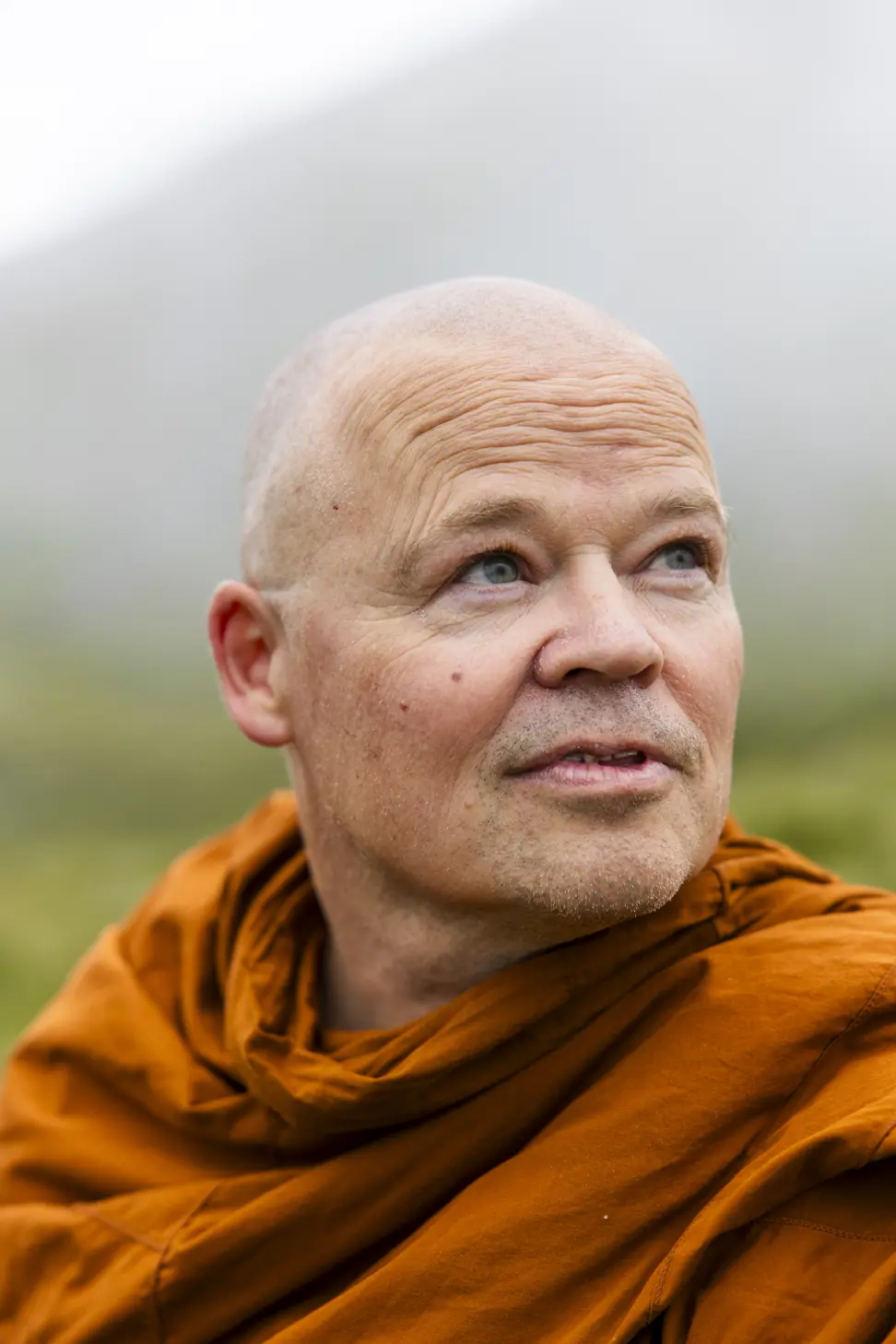
For Nitho the happiness is not the outer, but the inner. “These are states of our mind that most people have not tried, unless they have focused on it.”
But what happened? What made life take such a sharp turn from business and economics to monk? Nitho points to two events. One of them took a place in the Jotunheimen mountains towards the end of his studies, when Nitho and a few friends walked the mountain trip to Besseggen.
While waiting for the boat to Memurubu, a group of blue butterflies catch the attention of Nitho. He walks closer and tries to catch one.
“Not to harm”. I just really wanted to experience the joy of being with something which is very beautiful.
But the butterflies did not let themselves be captured.
The group of friends enters the boat and after a while start hiking the trail. Arriving at the Beseggen ridge itself, they take a break. Nitho walks a little to the side to enjoy the view and wonders what has happened with his mind.
“I was genuinely happy, genuinely peaceful, full of energy, and it was very strong. I remember I stood there and wondering: Why am I happy here? This is not a party, not sex, not vacation, not my hobby. Why am I standing here looking at a lake and some mountains, and then I’m super happy and mentally clear?
The experience takes on an extra dimension when a butterfly comes towards him.
“He landed here and sat there for maybe two minutes.”
He points slightly above his chest.
This incident has later taken on a greater meaning for Nitho.
“When I was down by the lake earlier in the day, I had a desire to catch the butterfly, but while completely quiet and peaceful in the mountain, it came of his own accord. It made a profound mark in my mind, but of course I didn’t understand it then − I was stupid as a piece of loaf mentally at that time. I had a life that had all my focus on the outside,” he says.
– Remember where I came from. School of Business, student. Up, forward and success. Social pressure towards becomming succesfull within the norm that is defined. That means a lot of stress and anxiety about not being able to do it. I had a great time, but it was a bit of a stretch.
“I hear that you weren’t a mountain man at this time?”
“No, walking in the mountains was almost the exact opposite of what I valued at the time.
Nitho laughs.
“But afterwards, I started hiking in the mountains. I got a kind of emotional understanding that here is something. There is something about being out in the mountains and nature, but at that time I couldn’t explain what it was.
The battle for our attention is enormous and tear us up inside. In 2017, Netflix CEO Reed Hastings stated that the biggest competitor is not other competitors, but the need we still have to close our eyes to the screen and sleep. A statement that in many ways has remained as a picture of our time.
At the same time, words such as spirituality, meditation and mindfulness have become more common. In traditional outdoor life, we may use a different vocabulary to put words to some of the same.
“To stand on a mountain top and look down on our life.” “Clear the mind.” “Be present here and now.”
At the same time, there is little doubt that mountains and beautiful nature have an attraction for many of those who want to dive deeper into both body and mind.
Yoga enthusiasts have long since made their path into the Norwegian mountains, not infrequently with shelter in an DNT cabin.
Others find their way without the help of the red T-s (red trail marks on stones along the path), such as the group gathered at Dvergsdalsstøylen in Jølster on a September day. They are on a qigong and taiji retreat, an annual event during the fall.
“The retreat will be fully booked within a week after the announcement,” says instructor Harald Øygard.
He teaches at the Qigong Centre in Oslo, usually indoors. But being out in such mountain surroundings adds something extra.
“You can get a completely different presence. You can feel the wind, the hear the leaf on the tree, the river, the birds, feel the soil in a different way. The senses are strengthened, and therefore the experience becomes clearer and stronger.
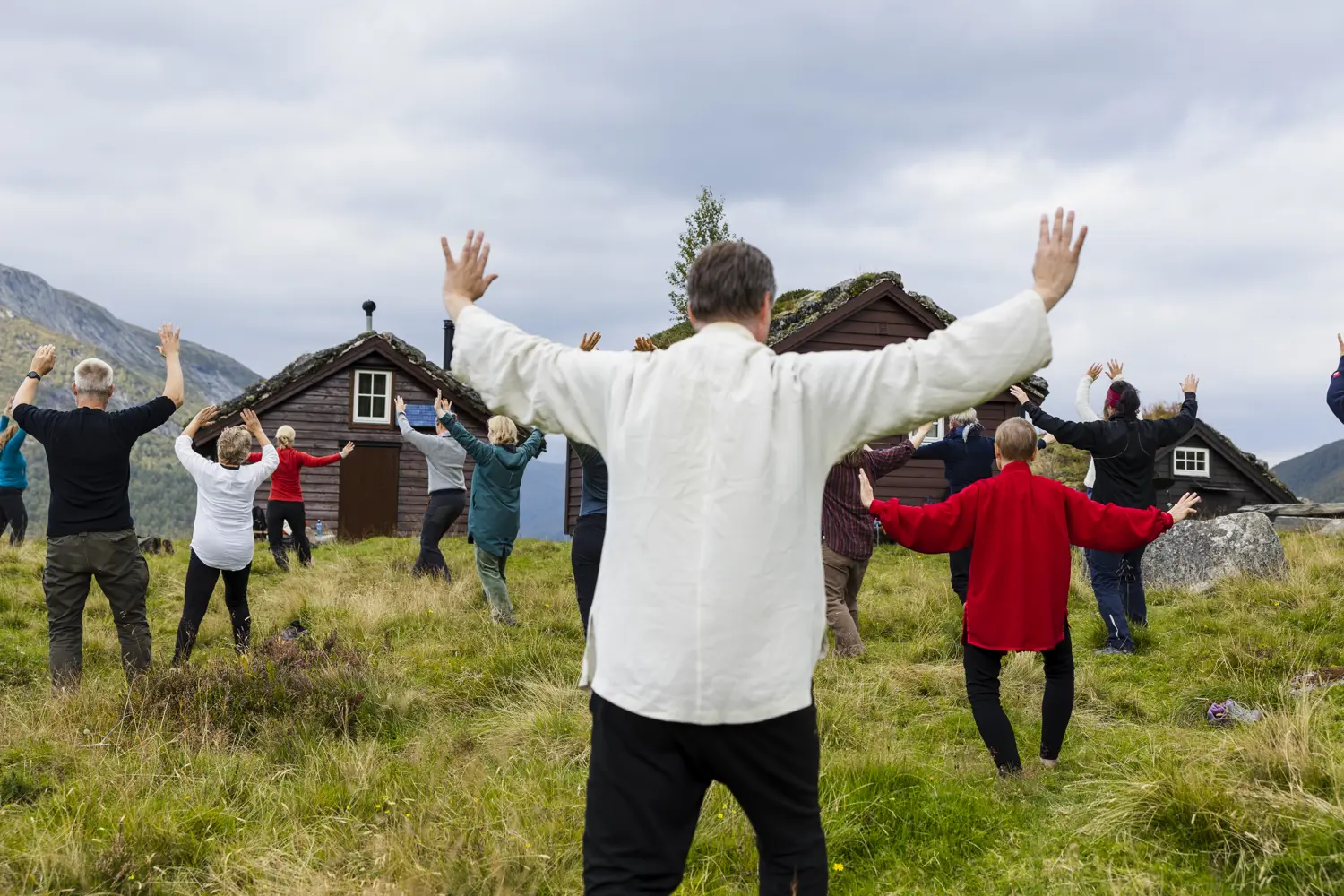
When the weather allows, Øygard has some of the teaching outdoors. Being in nature adds an extra dimension, he says.
Today, things are very separated, we train the biceps and go to the heart specialist. In taiji and qigong we try to get back to one thing. You become one, but also one with everything. – Harald Øygard, qigong instructor
Taiji and qigong originated in China, and the trace goes back several thousand years.
Seen from the outside, it can be depicted as calm, controlled and at the same time powerful movement patterns, but it is also about a whole lot more. About both the physical and mental, the inner and outer, yin and yang. About energy and releasing tension and stress in body and mind.
“Today, things are very separate, we train our biceps and go to a heart specialist. In taiji and qigong we try to get back to one thing. You become one, but also one with everything,” says Øygard.
He tells me about a friend who was going to start running for 100 days out in nature. After day 70, the running started to get different. The person slipped out of the training bubble and into another mode.
“It’s something that can probably be compared to walking for a long time in the mountains. I believe you through taiji and qigong you can find this mode much faster. It’s about standing out there and feeling that we are part of the whole, we are not separated.
According to Øygard, taiji and qigong can be seen as meditation in movement.
“Meditation is about getting it quiet and clear, being here and now. Here you move your body, energy and mind. You become one with nature, and as a result, you feel a quietness. One of the things I love about this, is when it becomes completely quiet, no thoughts, and a feeling arises that everything is clear. Then you experience everything in a completely different way. The more you manage to find this feeling, the more you can manage to enjoy nature in a deeper way – that’s my opinion
If you look around you at Dvergsdalsstøylen this afternoon, you will notice that it is far from a homogeneous group of people moving out there in the grass, in between mountain farms, glaciers and mountains.
“I’ve been doing this for 30 years, and I see that people are more open to this than maybe 10-20 years ago. What is a bit interesting is that in China and in the east, qigong and taiji were mostly made as a prevention, to avoid illness and imbalance. Today, most of them come because they need change. Maybe they’ve tried the gym, yoga and the like, but haven’t found it.
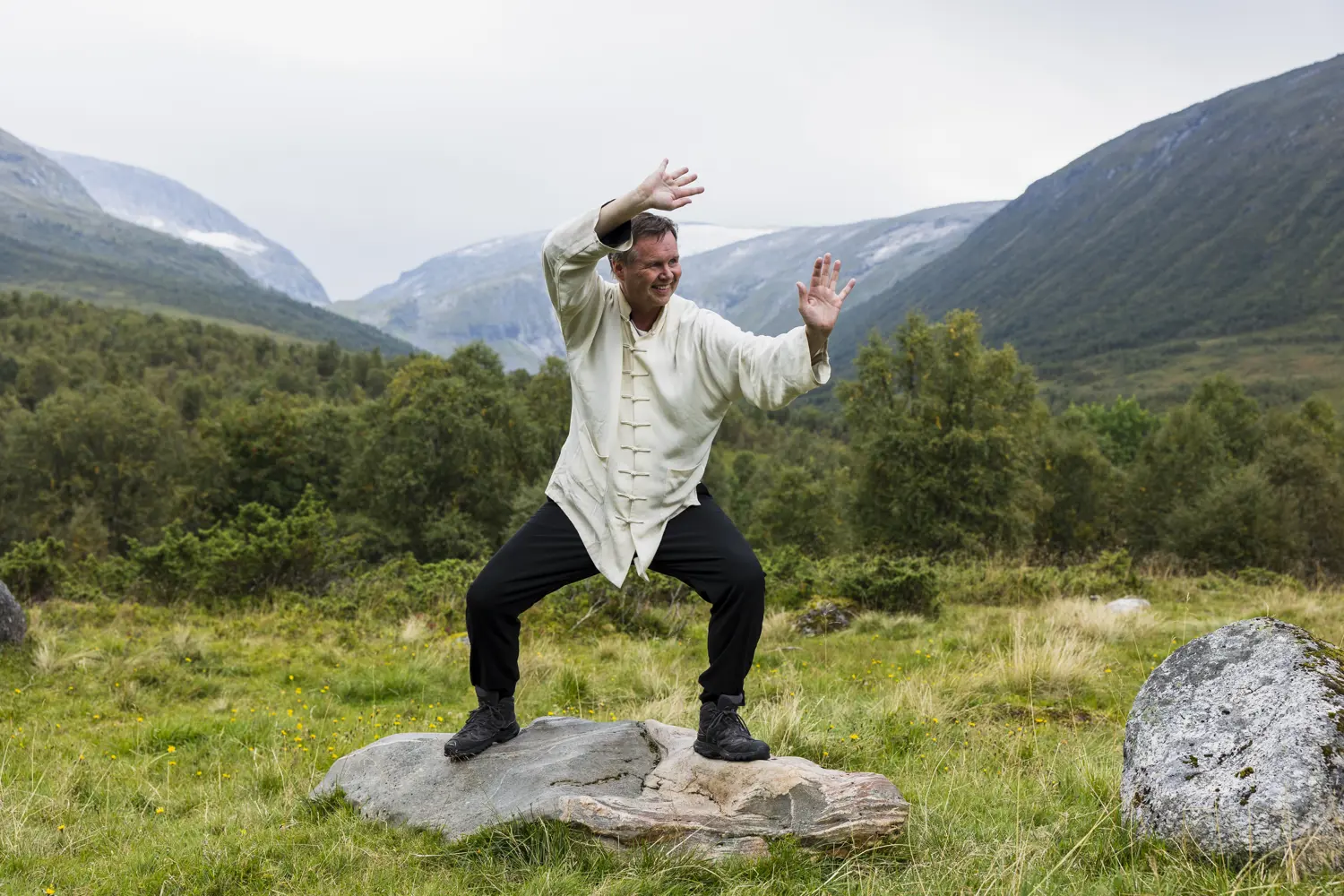
Harald Øygard has studied qigong, taiji and meditation since 1995 and has been actively teaching since 2000. In the autumn, he arranges a retreat at Jølster in Sunnfjord municipality.
Back in his cabin in Sunnmøre, Nitho draws a line from the experience he had at Besseggen, to life as a bhikkhu, but it is not a straigt line.
It is not until several years after the trip in Jotunheimen that he becomes aware of meditation. He has a lawyer brother who is on a backpacking trip, and who participates in increasingly prolonged meditation retreats. Nitho becomes curious. The following summer, he himself participates in a nine-day silent retreat in the forest outside Oslo.
“What happened there was so powerful and so life-changing for me when it comes to quality of life,” he says.
Nitho already knows by then that he wants to try this for a year full-time and travels to Perth in Australia. He will stay there for 14 years.
Both Nitho and Øygard speak of a quiet, a mentally silent. A freedom from thoughts, stress and negative emotions. While Nitho is at the cabin, he likes to meditate for five hours straight. Then he sits or lies completely still and at rest.
“It may seem strange to meditate for five hours, but you don’t experience it as five hours. If you’re a little advanced, what you find in there is so good and so much powerful than what you find on the outside.
“Can you put into words what happens when you meditate?”
– Most people select a meditation object, it can be the breath, a feeling, something you visualize. The point of focusing is to stop focusing on everything else. Thoughts and mental activity slowly but surely decrease. One gets thoughts, fantasies and emotions that come and go, but the speed slows down, and the space between them becomes larger. And at one point or another, your mind is completely silent – and that’s absolutely wonderful.
But this silence is not the end station, it is potentially the start of something more permanent and even more powerful, according to the monk.
“The point is to use this energy and this mental clearity to understand our own nature and develop wisdom. This understanding makes the “normal” life easy and unproblematic − both mentally, socially and physically.
This is what he got a taste of at his first retreat, which turned his whole life around.
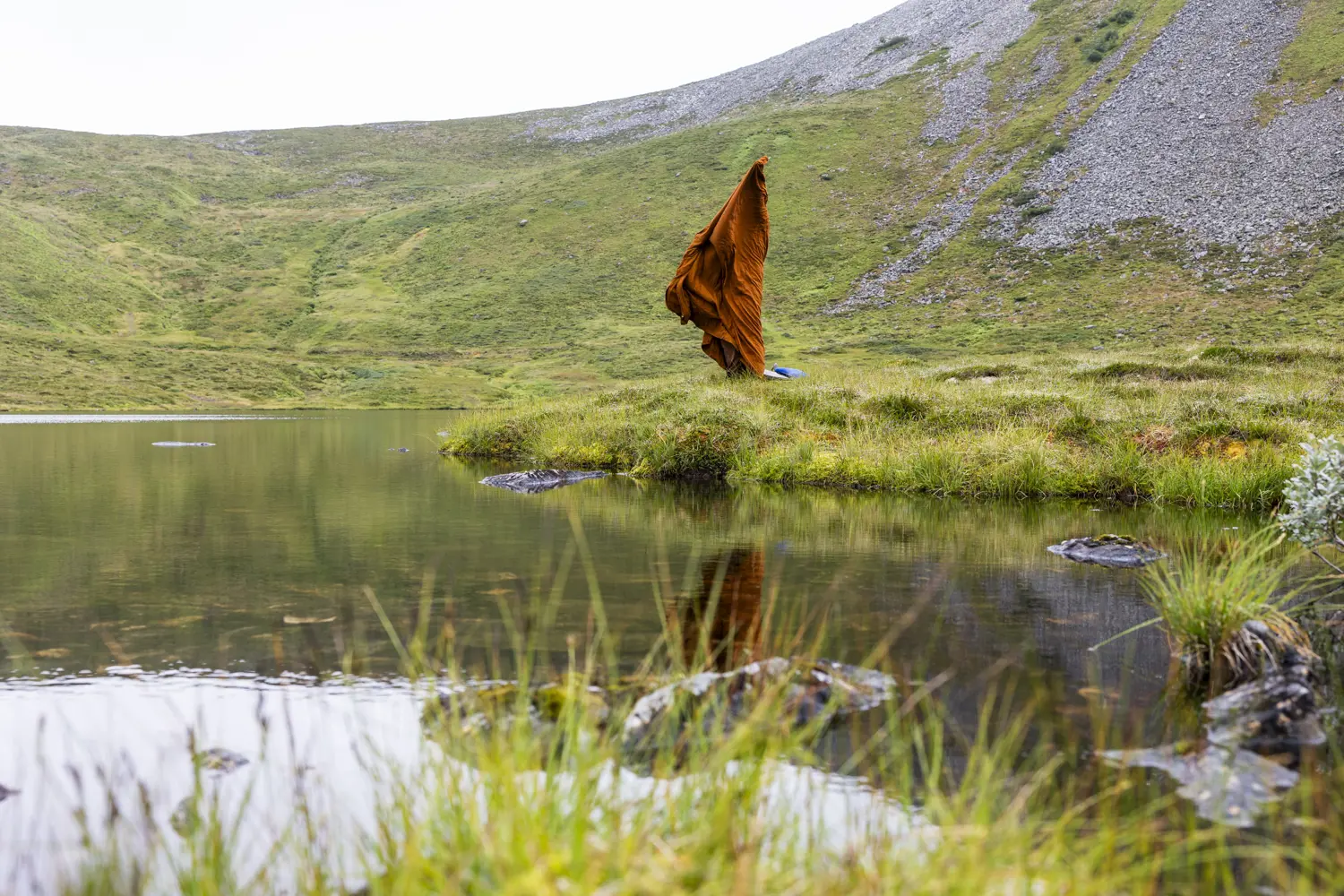
The monk’s robe is a symbol of simplicity. It has different colors depending on the kind of tradition the monk belongs to.
DNT has created a social culture, but also a physical culture that is very similar to what a Buddhist monk does. —Nitho, Buddhist monk
In sports, there is a theory that you have to train focused for 10,000 hours to have a chance of getting to the top level. Nitho has trained these hours and much more.
Understanding the inner feeling of Nitho is just as difficult as being capable of running 100 meters in 9.58 seconds. But most of us can partly relate, we like to take a workout every now and then, can recognize the experience of the body at speed and also mental well-being.
And maybe outdoor mountain people exercise their minds more often than they realize. According to Nitho, nature is the very best arena for spiritual training.
“If you take a trip out into nature, the first thing that happens is that you become free, you go away from work, maybe your family, the TV and so on. You are pulled out of your habitual life situation for a period of time and into something that is peaceful, calm, beautiful and friendly. This is gold for the mind. If you take a slightly longer trip, you go cabin to cabin over many days – it’s almost a bit of forced spirituality without you knowing it,” he says.
“DNT has created a social culture, but also a physical culture that is very similar to what a Buddhist monk does. I see DNT as the largest spiritual society in Norway, and I actually mean that.
He laughs a little, before clarifying:
“The biggest – not the deepest.”
Feel free to share this page with a friend:


